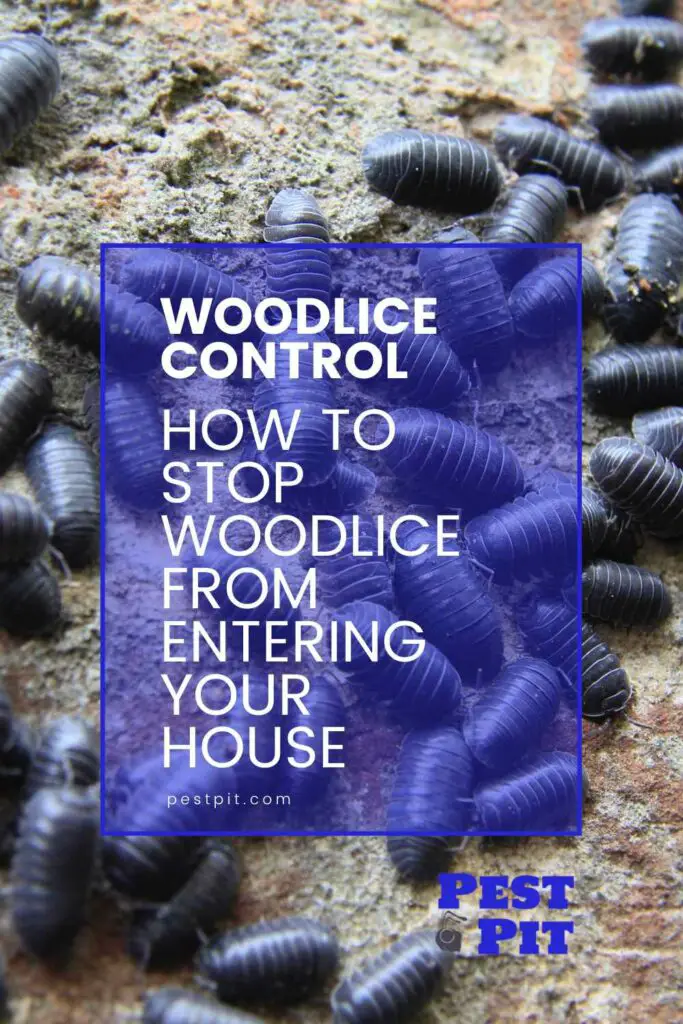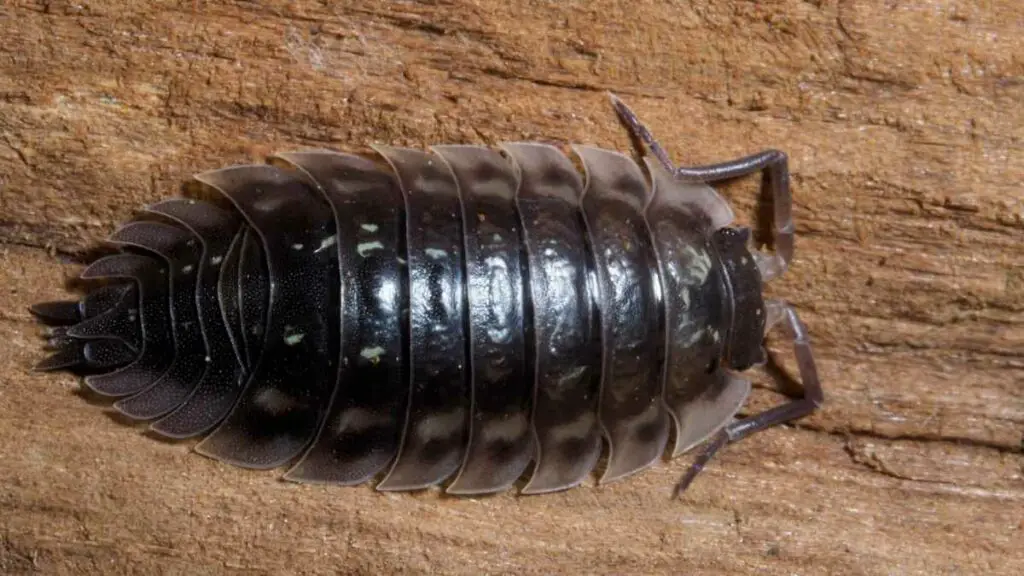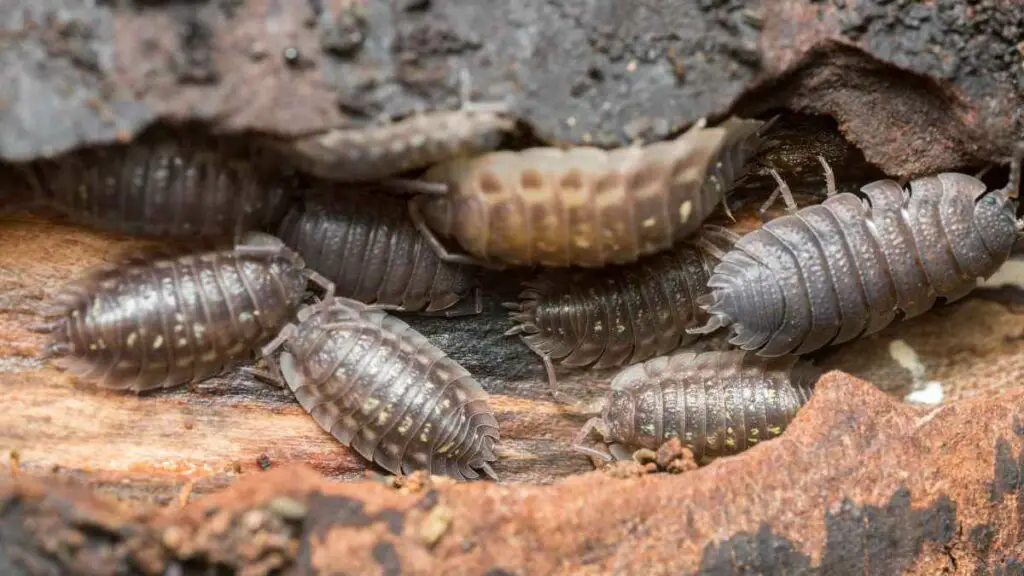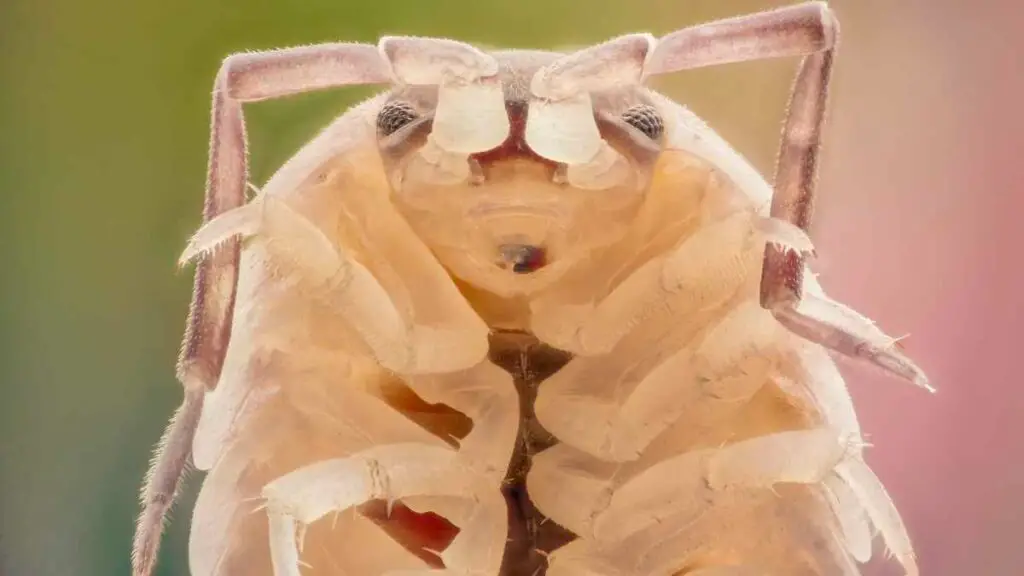Are woodlice bugging you?
These little crustaceans may be small, but they can be a big nuisance when they start to invade your home.
The good news is there are plenty of things you can do to stop them from getting in and taking over. From sealing up cracks and crevices to making your home less appealing to them, there are a variety of effective strategies for keeping woodlice out.
So, let’s dive in and learn how to stop woodlice from entering your house.

Woodlice – What Are They?
Woodlice are small, terrestrial crustaceans closely related to lobsters and crabs.
They are also known as “pill bugs” or “roly-poly bugs” due to their ability to roll into a tight ball when threatened.
While these harmless creatures are common in gardens and outdoors, they can also become a problem when they find their way into the home. Not only are they unsightly, but their presence can indicate a damp or humid environment, leading to mold and mildew growth.
They can also consume plant materials in your house if they find any, which can become a problem in a garden. Woodlice are usually found in damp, dark places and feed on mold, algae, and dead plant material, so when they’re found indoors, it can mean that your home has excessive moisture levels or leaks that allow them to thrive.
How Do Woodlice Get Into Your House?

Woodlice are known for their sneaky ways of entering your house and making themselves at home.
Some of the most common entry points for these little critters include:
- Cracks and gaps in the foundation: These tiny bugs can squirm their way through even the tiniest cracks, making their way into your home’s lower level.
- Windows and doors: Woodlice can easily crawl through open windows or doors or even sneak in through gaps around window and door frames.
- Utility pipes and cables: If you have pipes or cables that run into your home, woodlice can use these as a highway to enter your house.
- Houseplants: If you’re an avid gardener and bring plants indoors, be aware that woodlice may be hiding in the soil or on the foliage.
- Firewood: These bugs like to make their homes in firewood piles, so if you’re bringing in firewood to use in your fireplace or stove, you may unknowingly bring in some unwanted guests.
All in all, woodlice are pretty good at finding their way in, but with some awareness and simple preventative measures, you can keep woodlice out of your home.
Strategies For Keeping Woodlice Out of Your House

When preventing woodlice from taking up residence in your home, the first step is to seal off any cracks and gaps that may invite these little critters to come in. This includes paying attention to the foundation of your house, as well as any areas where pipes or cables enter the home.
By sealing off these potential entry points, you’re putting up a barrier that woodlice won’t be able to penetrate.
Another effective prevention method is to use door sweeps and screens on windows and doors. Door sweeps are a simple and affordable solution installed at the bottom of your door to create a barrier that woodlice can’t crawl through.
Similarly, screens on windows and doors can help keep these bugs out while allowing fresh air to circulate through your home.
Keeping the area around your house clean and free from potential food sources for woodlice is also essential. This means regularly removing leaf litter, decomposing plants, or rotting wood around your home and keeping the gutters clean. Take away the things woodlice thrive on.
It’s also a good idea to regularly inspect your home for any signs of woodlice infestation, such as shed skins, fecal matter, or the bugs themselves.
By being vigilant and taking action as soon as you spot a problem, you can keep woodlice at bay and enjoy a bug-free home, free of any woodlice infestation.
Controlling Woodlice

When it comes to controlling woodlice in your home, there are several different methods you can use to get the job done.
One of the most popular options is to use insecticides, which can be applied directly to the woodlice or areas where they’re known to frequent. These chemicals can effectively eliminate woodlice, but it’s essential to read the labels carefully and follow all safety precautions.
Another effective way to control woodlice is by regularly cleaning and vacuuming your home. This will help to remove woodlice eggs, which can quickly hatch and lead to a more significant woodlice infestation. Additionally, it will help to remove the food sources woodlice are feeding on.
If you’re looking for a non-chemical control option, you can try vacuuming or removing woodlice by hand. This can be a bit more time-consuming, but it’s an effective way to eliminate these bugs without using chemicals.
Another non-chemical control is Diatomaceous Earth (DE), a safer and natural option that causes the exoskeleton of woodlice to dry up and die. This can be applied to surfaces or infested areas and provides long-lasting control of the woodlice population. Again, follow instructions carefully, and keep DE away from kids and pets. DE has some benefits but also some health concerns.
It’s also important to remember that it’s not just about killing the woodlice but also about creating an environment less conducive to their survival. This means fixing any leaks or areas of high humidity in your home and keeping the area around your house clean and dry.
Ultimately, controlling woodlice in your home may require a multi-pronged approach, but with a little effort and determination, you can get these pesky bugs under control and keep them out of your home for good.
Pest Control – When To Call Them

The first thing to consider is the extent of the infestation. If you’ve only spotted a few woodlice here and there, you may be able to take care of the problem yourself by vacuuming them up or using a damp cloth to wipe them away.
However, if you’re seeing large numbers of woodlice in multiple rooms of your home, or if they seem to be causing damage to your walls or furniture, it’s time to call in the experts.
Another important factor to consider is whether or not the woodlice are causing any health problems.
Woodlice are not known to be harmful to humans or pets, but if you or a family member is experiencing allergic reactions or other health issues that you suspect may be related to the woodlice, it’s best to call pest control right away.
Finally, you may consider calling pest control if the woodlice infestation impacts your quality of life. These bugs can be creepy and unsightly, and if you find them in your bed or kitchen, it can be difficult to relax and enjoy your home.
In summary, If you find yourself in trouble with the woodlice, it’s time to consider calling a professional pest control expert if you have a large infestation, if they are causing damage or health problems, or if they’re impacting your quality of life.
With their knowledge and tools, they will be able to quickly and effectively eliminate the problem and help you get back to enjoying your home in peace.
Conclusion
Keeping woodlice out of your home doesn’t have to be a difficult task. You can effectively keep these pests at bay by sealing up cracks and crevices, reducing humidity, and making your home less appealing to them.
Remember to pay close attention to areas like basements, crawl spaces, and damp areas, as these are common entry points for woodlice. And if you ever see signs of an infestation, don’t hesitate to call a professional pest control service to help you deal with the problem.
By following these tips, you’ll be able to enjoy your home in peace without worrying about woodlice.
Keep in mind that prevention is the key, and taking action as soon as you notice any signs of woodlice presence can help avoid a bigger infestation.
Good luck!

